Stories Category: Intensive Care

Sepsis: Definitions, Pathophysiology and the Challenge of Bedside Management
A comprehensive and state-of-the-art resource for clinicians who care for patients with sepsis and research scientist alike. Patients with severe sepsis requiring ICU admission have very high rates of ICU and overall... read more
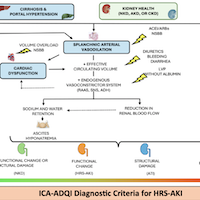
Hepatorenal Syndrome in the ICU
Patients with cirrhosis are susceptible to develop acute kidney injury (AKI), a complication that occurs in up to 50% of hospitalized patients [80% in the intensive care unit (ICU)], and has been associated with increased... read more
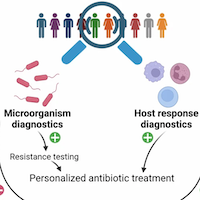
Diagnosing Sepsis: Where We’re At And Where We’re Going
Diagnosing sepsis remains problematic. Pathogen identification is frequently lacking and the dysregulated host response is non-specific. Blood cultures often take days to deliver a result and, even then, approximately 90%... read more
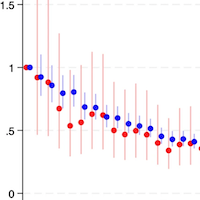
Sepsis Mortality Among ICU Patients with Hematological Malignancy
Over the past two decades, there have been substantial improvements in mortality in hematological malignancy patients with sepsis, including across all levels of illness severity and in patients requiring mechanical ventilation.... read more

ARDS Guidelines: Oceans Apart or Rivers That Merge?
The updated guidelines from the ATS and ESICM reached overwhelmingly similar conclusions. Both sets of guidelines emphasize the challenges in issuing blanket recommendations that apply to all patients with ARDS, and both... read more

Extracorporeal Life Support: The ELSO Red Book, 6th Edition
Written by over two hundred experts from around the world, this new edition is the definitive reference text on Extracorporeal Life Support, providing both the latest evidence and practical advice on how to clinically manage... read more

Impact of a Rounding Checklist Implementation in the Trauma ICU on Clinical Outcomes
We aimed to evaluate the effectiveness of an intensive care unit (ICU) round checklist, FAST HUGS BID (Feeding, Analgesia, Sedation, Thromboembolic prophylaxis, Head-of-bed elevation, Ulcer prophylaxis, Glycemic control,... read more

Vasopressor Reduction Effect of Polymyxin B Hemoperfusion
This study aimed to evaluate the effect of polymyxin B hemoperfusion (PMX-HP) in patients with peritonitis-induced septic shock who still required high dose vasopressors after surgical source control. A total of 338 patients... read more

Remimazolam Effect on Hemodynamics in Patients with Septic Shock
Remimazolam is safe and effective for inducing general anesthesia in patients with septic shock. Low, medium, and high doses of remimazolam can maintain a stable hemodynamic state, and the recovery of hepatic and renal function... read more

Fluid Boluses May Improve CRT
Several studies have validated capillary refill time (CRT) as a marker of tissue hypoperfusion, and recent guidelines recommend CRT monitoring during septic shock resuscitation. Therefore, it is relevant to further explore... read more
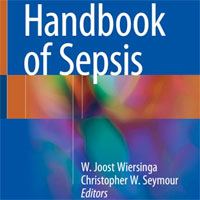
Handbook of Sepsis
This recently released practically oriented book provides an up-to-date overview of all significant aspects of the pathogenesis of sepsis and its management, including within the ICU. Readers will find information on... read more

Methylene Blue in Sepsis and Septic Shock
This systematic review and meta-analysis evaluated the effect of MB in three RCTs. They found that MB treatment significantly reduced time to vasopressor discontinuation, days on mechanical ventilation, and length of ICU... read more
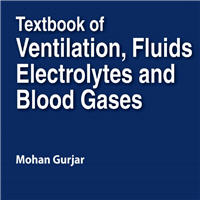
Textbook of Ventilation, Fluids, Electrolytes and Blood Gases
The Textbook of Ventilation, Fluids, Electrolytes and Blood Gases encompass essential topics for which thorough education and training is a must for any clinician who manages these patients. This book has four sections, each... read more

Hydroxocobalamin Treatment for Vasoplegia-associated Shock
Vasoplegia is generally defined as prolonged vasodilation due to a pathological decrease in systemic vascular resistance, which causes persistent hypotension even in the setting of normal or increased cardiac output. Vasoplegia... read more

Cardiac Index and Heart Rate as Prognostic Indicators for Mortality in Septic Shock
Our retrospective study shows that monitoring cardiac index and heart rate in patients with septic shock may help predict the organismal response and hemodynamic consequences, as well as the prognosis. Thus, healthcare providers... read more

Fluid Personalization and Vasopressor Decisions in Early Sepsis Management
In this randomized vignette survey study of US critical care clinicians, we found that fluid volume already received was associated with the largest changes in decisions to administer additional fluids or initiate vasopressors... read more

Handbook of Critical and Intensive Care Medicine
The latest edition of this handbook is a concise yet comprehensive guide for attending physicians, fellows, residents, and students who cover the ICU. The chapters follow an outline format and are divided by organ system,... read more








